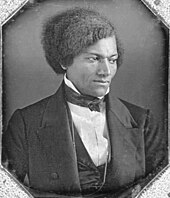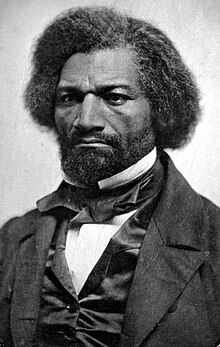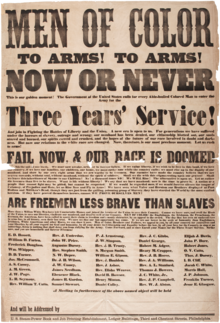Frederick Douglass
- Afrikaans
- العربية
- Asturianu
- Azərbaycanca
- تۆرکجه
- Bân-lâm-gú
- Беларуская
- Български
- Català
- Čeština
- Cymraeg
- Dansk
- Deutsch
- Eesti
- Ελληνικά
- Español
- Esperanto
- Euskara
- فارسی
- Français
- Frysk
- Gaeilge
- 한국어
- Հայերեն
- Hrvatski
- Bahasa Indonesia
- Interlingua
- Íslenska
- Italiano
- עברית
- ქართული
- Latina
- Latviešu
- മലയാളം
- მარგალური
- مصرى
- Bahasa Melayu
- Nederlands
- 日本語
- Nordfriisk
- Norsk bokmål
- پښتو
- Polski
- Português
- Română
- Русский
- Scots
- Simple English
- Slovenčina
- Slovenščina
- کوردی
- Srpskohrvatski / српскохрватски
- Suomi
- Svenska
- Tagalog
- ไทย
- Тоҷикӣ
- Türkçe
- Українська
- Tiếng Việt
- Winaray
- 吴语
- Yorùbá
- 中文
Frederick Douglass | |
|---|---|
John S. Durham | |
| Personal details | |
| Born | Frederick Augustus Washington Bailey c. February 1817 or 1818[a] Cordova, Maryland, U.S. |
| Died | February 20, 1895(1895-02-20) (aged 77–78) Washington, D.C., U.S. |
| Resting place | Mount Hope Cemetery, Rochester, New York, U.S. |
| Political party | Republican |
| Spouses | |
| Relatives | Douglass family |
| Occupation |
|
| Signature | |
Frederick Douglass (born Frederick Augustus Washington Bailey, c. February 1817 or February 1818
After escaping from
Douglass wrote three autobiographies, describing his experiences as an enslaved person in his
Douglass believed in dialogue and in making alliances across racial and ideological divides, as well as, after breaking with William Lloyd Garrison, in the anti-slavery interpretation of the U.S. Constitution.[8] When radical abolitionists, under the motto "No Union with Slaveholders", criticized Douglass's willingness to engage in dialogue with slave owners, he replied: "I would unite with anybody to do right and with nobody to do wrong."[9]
Early life and slavery
Frederick Augustus Washington Bailey was born into slavery on the Eastern Shore of the Chesapeake Bay in Talbot County, Maryland. The plantation was between Hillsboro and Cordova;[10] his birthplace was likely his grandmother's cabin[b] east of Tappers Corner and west of Tuckahoe Creek.[11][12][13] In his first autobiography, Douglass stated: "I have no accurate knowledge of my age, never having seen any authentic record containing it."[14] In successive autobiographies, he gave more precise estimates of when he was born, his final estimate being 1817.[10] However, based on the extant records of Douglass's former owner, Aaron Anthony, historian Dickson J. Preston determined that Douglass was born in February 1818.[2] Though the exact date of his birth is unknown, he chose to celebrate February 14 as his birthday, remembering that his mother called him her "Little Valentine."[1][15]
Birth family
Douglass's mother, enslaved, was of African descent and his father, who may have been her master, apparently of European descent;[16] in his Narrative (1845), Douglass wrote: "My father was a white man."[10] According to David W. Blight's 2018 biography of Douglass, "For the rest of his life he searched in vain for the name of his true father."[17] Douglass's genetic heritage likely also included Native American.[18] Douglass said his mother Harriet Bailey gave him his name Frederick Augustus Washington Bailey and, after he escaped to the North in September 1838, he took the surname Douglass, having already dropped his two middle names.[19]
He later wrote of his earliest times with his mother:[20]
The opinion was also whispered that my master was my father; but of the correctness of this opinion, I know nothing. ... My mother and I were separated when I was but an infant. ... It is a common custom, in the part of Maryland from which I ran away, to part children from their mothers at a very early age. ... I do not recollect of ever seeing my mother by the light of day. She was with me in the night. She would lie down with me, and get me to sleep, but long before I waked she was gone.
After separation from his mother during infancy, young Frederick lived with his
Returning much later, about 1883, to purchase land in Talbot County that was meaningful to him, he was invited to address "a colored school":
I once knew a little colored boy whose mother and father died when he was six years old. He was a slave and had no one to care for him. He slept on a dirt floor in a hovel, and in cold weather would crawl into a meal bag head foremost and leave his feet in the ashes to keep them warm. Often he would roast an ear of corn and eat it to satisfy his hunger, and many times has he crawled under the barn or stable and secured eggs, which he would roast in the fire and eat.
That boy did not wear pants like you do, but a tow linen shirt. Schools were unknown to him, and he learned to spell from an old Webster's spelling-book and to read and write from posters on cellar and barn doors, while boys and men would help him. He would then preach and speak, and soon became well known. He became Presidential Elector, United States Marshal, United States Recorder, United States diplomat, and accumulated some wealth. He wore broadcloth and didn't have to divide crumbs with the dogs under the table. That boy was Frederick Douglass.[23]
Early learning and experience
The Auld family
| Part of a series on | ||||||||||||||||||
| Slavery | ||||||||||||||||||
|---|---|---|---|---|---|---|---|---|---|---|---|---|---|---|---|---|---|---|
 | ||||||||||||||||||
|
||||||||||||||||||
|
By country or region
|
||||||||||||||||||
|
||||||||||||||||||
|
||||||||||||||||||
|
Related
|
||||||||||||||||||
| ||||||||||||||||||
















